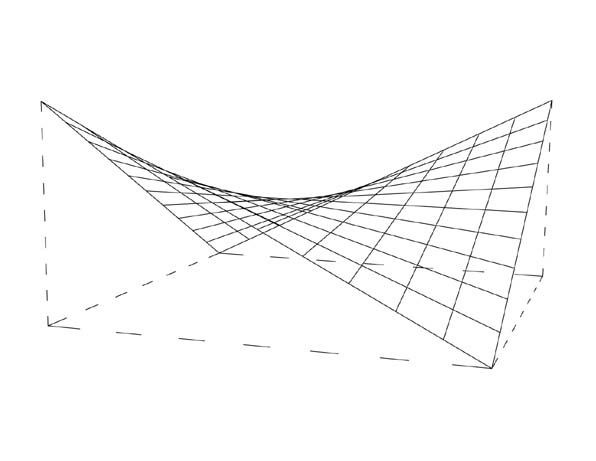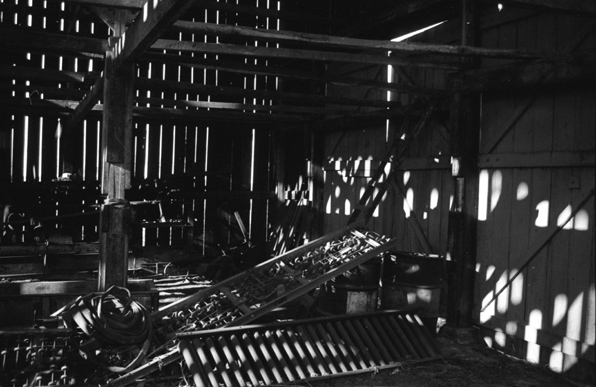I am spending a week in Louisville with family and I slid out for a bit to take a look at a couple of buildings that I remember fondly from growing up here. The first building is really only a small structure, a park gateway that was located across the street from my Dad's office when I was little. We only had one car, so on occasion my sister, Mother and I had to come downtown to pick up my Dad. If we were early or he was still on the phone, we would spend time in this small park across the street, it would be called a pocket park in today's parlance. The entrance to the little park was on the corner created by a small, white hyperbolic paraboloid.
Of course for the early 1970s, this was pretty cool stuff for a kid, sort of space-age and strangely naturalistic at the same time. It is surprisingly small, maybe 15 feet across and most intriguing for a small boy, you could scramble up is two dropped vertices and sit up in the saddle. I don't how often we visited this park, but this simple structure made a strong impression on me and I was very glad to see it is still there, a bit in need of some fresh paint, but still gamely holding down that little corner as larger hospital buildings arise across the street.
Hyperbolic paraboloids are particularly fascinating from a construction point of view as these double curving surfaces can be made up from all straight members rotating around a pair of axis.
I'm sure I didn't know that then, but when it came time in an architectural structures class to write a research project about a specific project type, in typically geeky fashion, I jumped at the chance to learn a bit more about the shape of the little park sentinel.
The other building in Louisville that I felt I had to visit was the downtown main branch of the Louisville Free Public Library. In fact, it was probably on trips back from the library that we were sitting in the little park waiting on my father to finish something up. The library looms large in my memory not just as an institution with a world of eye-opening books and an especially fascinating globe in the children's section, but also as a building itself. Even though a much more modern addition had been added on moving the main entrance away from this neo-classical facade, my memories are filled with hanging out amongst these fluted columns.
Like fluted stone columns anywhere, they are oddly hard and unforgiving and yet smooth and tactile sensuous. But just looking at them reminds me that it was the coolness of the stone, especially in the concave shadowy flutes, that I found most satisfying.
The interior of the building has changed a lot, the children's section sensibly moved to ground level. However, with that move kids no longer have to tread up the cool marble stair, holding on to the over-wrought iron rails and gaze incomprehensibly at the frescoes of Froebel and Herodotus.
I guess this made a trip to the library a fairly solemn affair, but I don't remember them as such, maybe their frequency muted the stoic marble and vaguely military iron railings.
Of course it only occurs to me now that these two structures were in some ways so different and yet so alike. I could write a number of comparisons and contrasts, metaphors of their style and construction that were so instructive to a budding architect or subconsciously absorbed to later bloom in drawings and models. That however is mere projection, more an outcome of too many seminars and graduate school presumptions. These buildings were part of a weekly circuit of my family, encountered by chance and remembered through repetition. In my own self-absorbed way however, I am awfully glad they are still with us.























